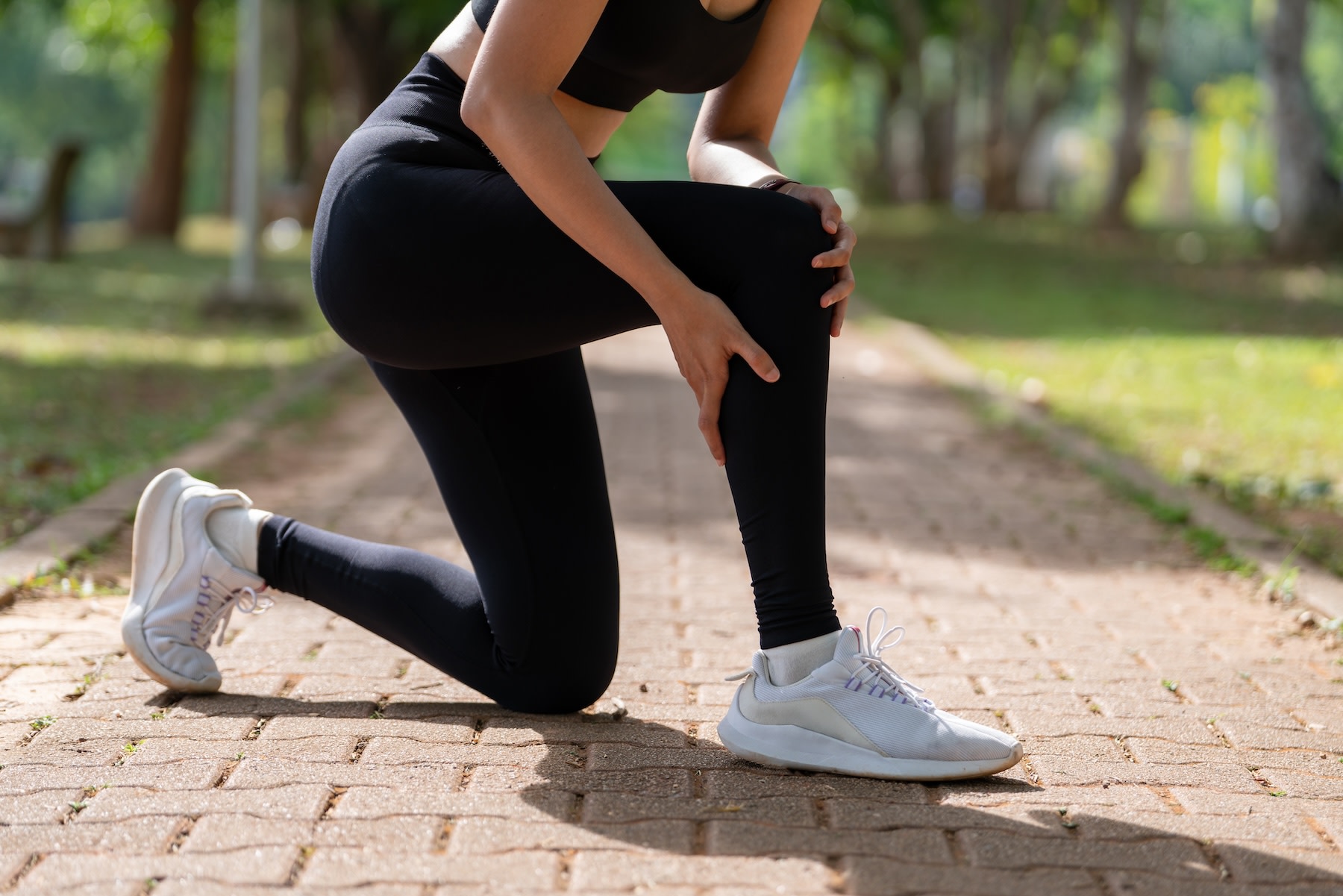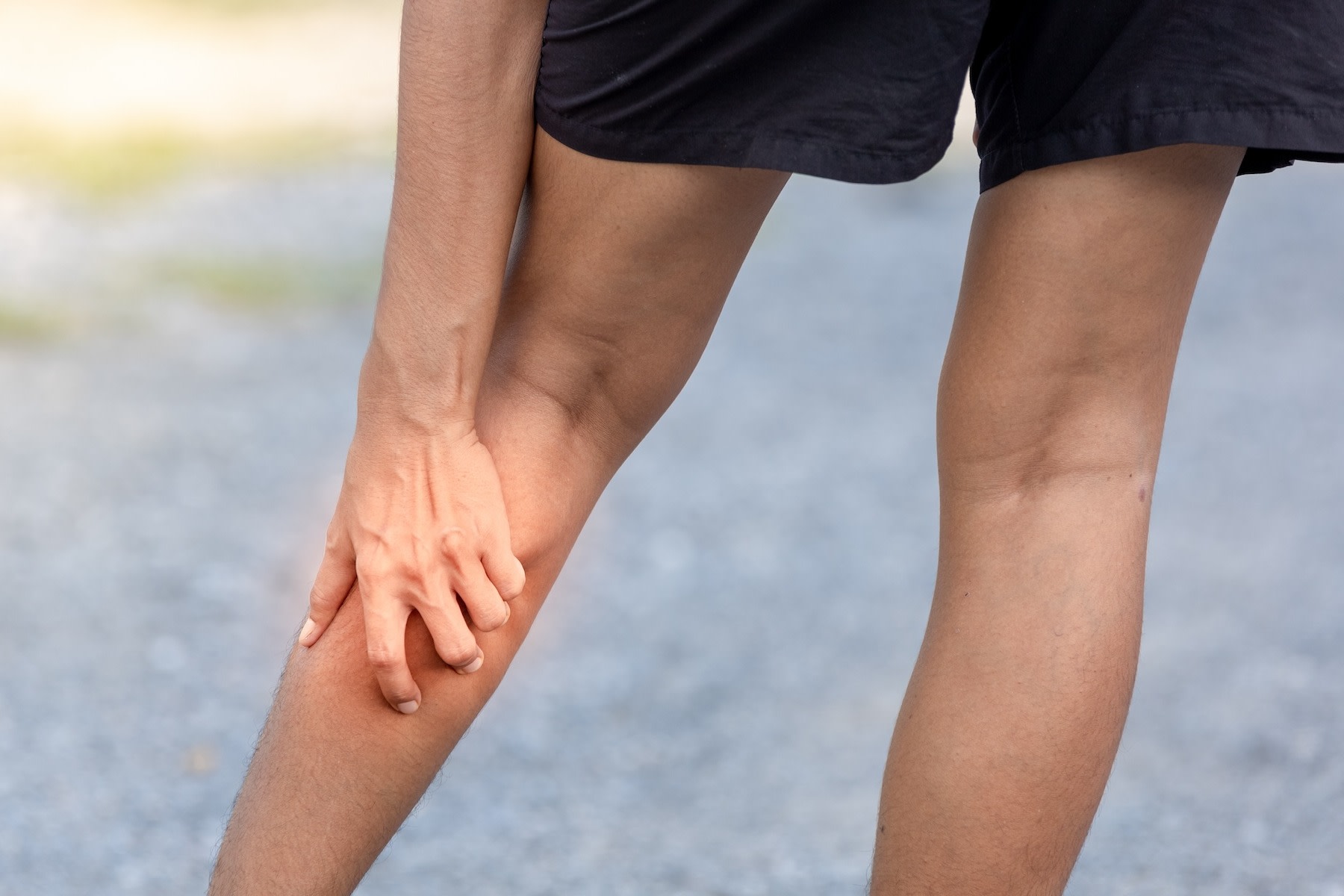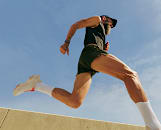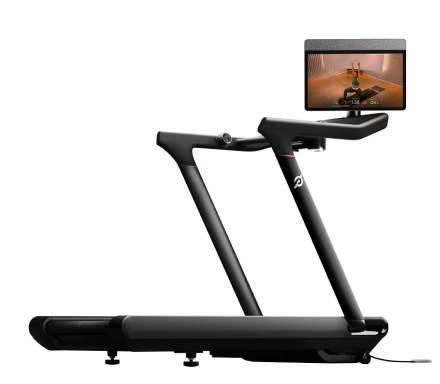
TravelCouples / Moment via Getty Images
Feel Itchy All Over During a Run? It’s Surprisingly Common—Meet Runner’s Itch
Scratchy skin during a workout isn’t fun. Fortunately, it shouldn’t last long—and there are a few things you can do to stave it off in the meantime.
By Jennifer Heimlich•
What Is Runner’s Itch?
What Causes Itchy Skin When Running?
Is Runner’s Itch Common?
How Long Does Runner’s Itch Last?
How to Treat Runner’s Itch
How to Prevent Runner’s Itch
The Takeaway
When you first start a new running routine, you’re probably excited for all the health benefits associated with the sport, from better sleep to a healthier heart to the beloved runner’s high. At the same time, you’re probably also prepared to deal with a few not-so-pleasant side effects as you get started. Think: that initial burning in your legs and lungs, or the pain of shin splints as your muscles and bones get used to the physical stress. But sometimes the side effects are more surprising. One of the weirdest? Itchy skin when running.
Discover more ways to reach your goals with Peloton
Yes, you read that right: If your legs itch when you exercise, you’re not alone. As odd and disconcerting as so-called “runner’s itch” can feel in the moment, fortunately, it’s completely harmless. But what’s behind this kooky phenomenon—and can you do anything about it?
Here’s what experts want you to know the next time you feel like you need to stop your run short for a scratching session.
What Is Runner’s Itch?
The most classic case of runner’s itch is just what it sounds like: an itchy or tingling sensation that happens during a cardio workout like running. Usually, it’s just something you feel on your skin—typically on your legs, but it can also strike on your torso or arms—without any visible symptoms. However, sometimes the issue also involves skin blotchiness or mild hives (although experts say hives are less common, and might be worth asking a doctor about—more on that later).
Although runner’s itch is most often associated with, well, runners, the truth is that any kind of endurance activity can bring it on. “Running is the most classic example because your blood is pumping at a consistent level for a prolonged period of time,” says physical therapist Dan Ginader. But anything that similarly gets your heart pumping—whether that’s a cycling workout or a challenging hike—can set it off.
Find Your Stride with a Peloton Running Class
What Causes Itchy Skin When Running?
Most of the time, runner’s itch happens because your nerves are being stimulated in a new and unfamiliar way. When you start running, your capillaires (aka tiny blood vessels) dilate to bring extra oxygen to your working muscles. As those capillaries start filling up with blood, they can expand so much that they push on the nearby nerve endings. “This is what triggers that itch,” explains board-certified dermatologist Asmi Berry, DO.
Runner’s itch can also be traced back to the fact that aerobic exercise triggers a histamine response, Berry adds. Histamine is known as our body’s “itch chemical” because it can be a major factor in itchy skin conditions like hives, eczema, and skin allergies. And while this exercise-induced histamine response that can manifest as runner’s itch “isn’t an allergy exactly,” Berry says, “for some people, it can almost feel like one.”
On the other hand, if you do see hives and blotchiness, that could signal a real allergic reaction, either to sweat or the pollen that’s floating around whatever environment you’re running in, Ginader says. (However, these allergies are separate from the classic form of runner’s itch, he adds.)
Other times, the causes behind your itching are very basic. Ginader says that sometimes it’s just a patch of dry skin that gets irritated from your sweat or a piece of clothing that’s rubbing up against it. “Sweat can mix with things on your skin like lotion or detergent and lead to irritation, especially in spots where there’s friction from clothing,” adds Brandon Welch, a clinical sports pharmacist. “Temperature changes, like running in cold air or suddenly warming up, can also confuse your nerves.”
Why Do My Legs Itch When I Run?
Legs are the most common body part to get super itchy while running, and the reason why is pretty straightforward: That’s where your muscles are working hardest when you run.
“Those muscles are starved of oxygen, so the blood flow in those areas tends to be heavier,” Berry explains. That means those capillaries are filling up with the most blood and most likely to start tickling those nerve endings.
Is Runner’s Itch Common?
Runner’s itch hasn’t been deeply researched, so there aren’t hard numbers on exactly how many people it affects. But experts say that it’s surprisingly common. Anecdotally, Ginader shares that any time he posts about it on social media, “I definitely get quite a few people that comment and say that is something that they experience,” he says.
Those most affected are people who are just starting a new cardio routine. “They’re either beginners, or I also see it in patients who work out steadily but then they’re training for marathons and suddenly they start doing a lot more than they typically do,” Berry says. Ginader explains that this is likely because their nerves haven’t experienced this level of training before (or at least not recently), “and they don’t quite know what to do with that information.”

Anut21ng / iStock / Getty Images Plus via Getty Images
How Long Does Runner’s Itch Last?
Fortunately, runner’s itch usually disappears pretty quickly. “Most people feel it during the first five to 10 minutes of their workout,” Welch says. “Once your body warms up and your circulation evens out, the itching often fades on its own.” Even in more intense scenarios, “people should get back to normal within a couple hours of exercise,” Berry says. If it takes longer than that for your body to return to baseline, she warns there may be something deeper going on, like a systemic allergy.
Runner’s itch also shouldn’t be a chronic issue you have to deal with long-term. Once you start working out consistently (while giving your body enough time to warm up at the start of each session), the problem should start to go away within a couple of weeks or so. Welch explains that the more often you move, the less your nerves will overreact to the blood flow changes. “If you’re noticing that it's gradually getting better, then that’s a good sign,” Berry says.
That said, Ginader says some patients find the problem to be so uncomfortable that it stops them from running or working out altogether. “They’ll try to go on a run every few months. And then that happens and they stop,” he says. “And so they never give themselves the opportunity to push through it and adapt.” In cases like these, runner’s itch might strike at the beginning of nearly any aerobic workout like running.
If you are doing cardio regularly, yet itchy skin when exercising continues to be something you deal with every time you lace up for weeks on end, you might want to visit a doctor to get to the root of the problem, since that could be a sign that something else is going on. If your symptoms are confined to the skin, Berry recommends seeing a dermatologist (and maybe also an allergist if you’re noticing hives); but if you’re also dealing with issues like wheezing or shortness of breath, you may want to make an appointment with a sports medicine doctor.
How to Treat Runner’s Itch
Unfortunately, once runner’s itch hits during a workout, there’s not a ton you can do about it. Welch says your best bet is simply to slow down for a second to give your body some time to adjust. “That quick change in blood flow is usually the trigger, and sometimes just easing into your run can help calm it down,” he says.
Meanwhile, remind yourself that the itchy feeling isn’t going to hurt you—it’s just coming from the fact that extra blood flow is hitting your nerves in an unfamiliar way. “A lot of times, an itch can be interpreted by the brain as something that’s foreign and you need to get it off your body,” Ginader says. “But if you’re telling your brain that this is just a natural reaction and this is something that is just happening because of blood flow, then that alone can decrease the sensation of the itch.”
Also, if you think dry skin might be playing a role, drink some water (which, let’s be honest, is never a bad idea, anyway). Being well-hydrated can help calm symptoms since dry skin tends to itch more, Berry says. She also recommends hydrating the skin directly with moisturizer if you’ve got access to some mid-workout.
Related Articles

Run
4 Ways to Prevent Runner’s Toe (and What to Do If It Happens Anyway)

Run
Running Can Feel Really, Really Challenging. These 12 Benefits Prove It’s Totally Worth It

Stretching + Mobility
8 Must-Try Warm-Up Moves For a Stronger, Faster Run

Run
Chasing a Runner’s High? Here’s What To Know About the Exercise-Induced Bliss
How to Prevent Runner’s Itch
If you don’t want runner’s itch to ruin your next workout, the most common expert advice is simply to give yourself enough time to slowly warm up. “Just easing into the run can help the circulatory system adjust more smoothly,” Berry says. Start with a few dynamic stretches and drills, plus a low-key, easy jog before getting into the meat of your workout.
Berry also recommends drinking lots of water and moisturizing your skin beforehand to help make sure dry skin doesn’t cause a flare-up. Additionally, although it might seem obvious, she suggests avoiding scratchy fabrics. In particular, running clothing with flatlock seams will reduce the likelihood of extra fabric irritating your skin, and light, breathable, moisture-wicking materials will help to keep you as dry as possible.
And make sure you’re not exposing your skin to anything that could exacerbate the problem. “Use unscented laundry detergent and skin products,” Welch suggests. “Anything too harsh can sit on your skin and cause irritation once you start sweating.”
If it gets really bad, you could also consider popping a pre-run antihistamine, so long as it’s recommended by your doctor. “If you know you’re someone who deals with runner’s itch often, taking a non-drowsy antihistamine like loratadine (Claritin) about 30–60 minutes before your run can help reduce the histamine response that causes the itching,” Welch says.
The Takeaway
Feeling your skin getting itchy while running can be a weirdly lonely experience—you might see all these other runners out and about enjoying their miles without scratching up and down their legs, while you can’t even go 10 minutes without feeling like you want to claw at your thighs. But runner’s itch is actually surprisingly common among beginners. And fortunately, it’s just a short-lived phenomenon that happens thanks to the interplay between your blood flow and your nerves.
If you’re able to push through it, your body will get more used to the process of pumping blood where it needs to be to power your workouts, and the symptoms should subside within a couple weeks of consistent workouts. As long as you can avoid scratching your skin raw, the issue is generally harmless (even if it is annoying).
The good news? The more you exercise, the less likely you’ll have to deal with runner’s itch. Chalk that up as an extra reason to get in another workout.

Peloton App
Access thousands of classes with no equipment needed.
This content is for informational and educational purposes only and does not constitute individualized advice. It is not intended to replace professional medical evaluation, diagnosis, or treatment. Seek the advice of your physician for questions you may have regarding your health or a medical condition. If you are having a medical emergency, call your physician or 911 immediately.
Explore Peloton Treads
Take your runs to the next level
Lace up and enter your email to get articles, instructor tips, and updates from Peloton sent to your inbox.
By providing your email address, you agree to receive marketing communications from Peloton.
For more about how we use your information, see our Privacy Policy.










